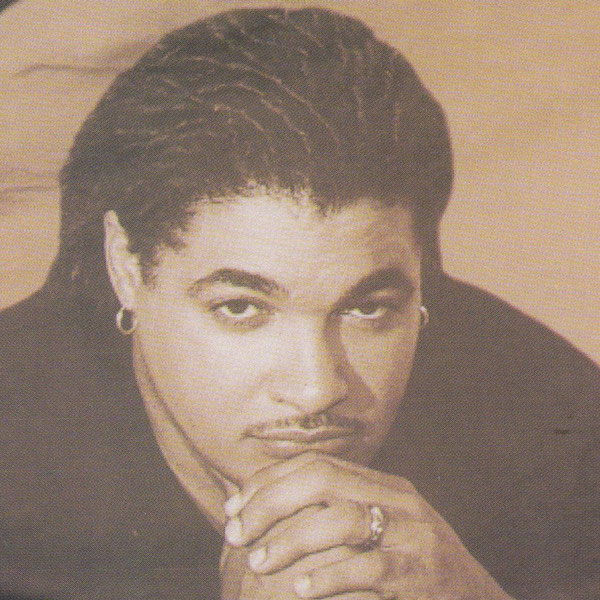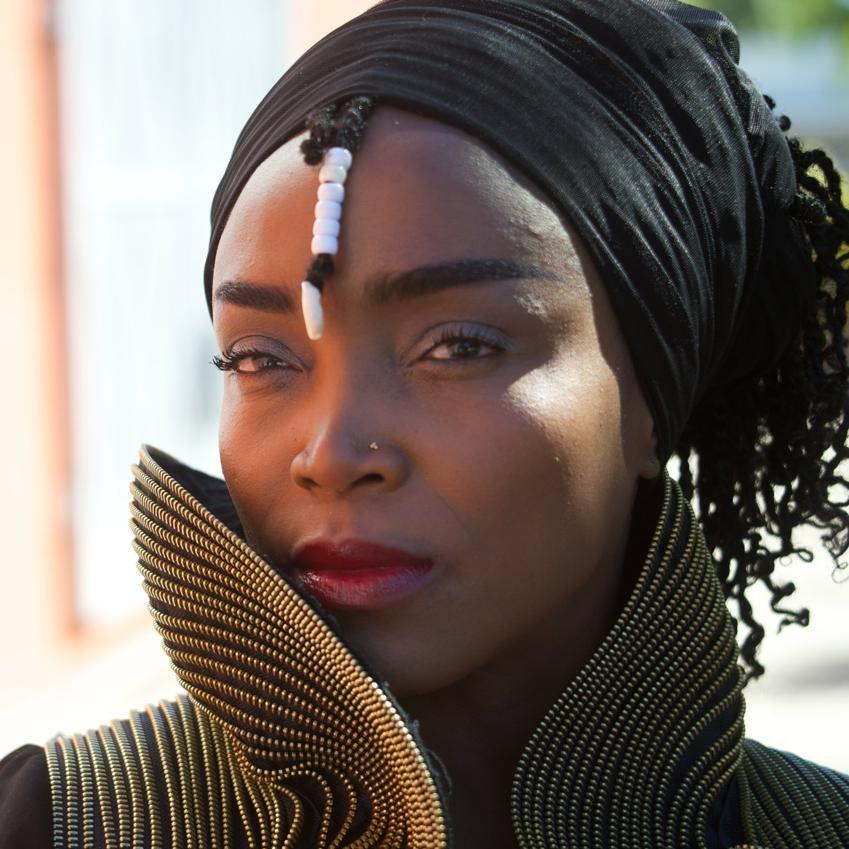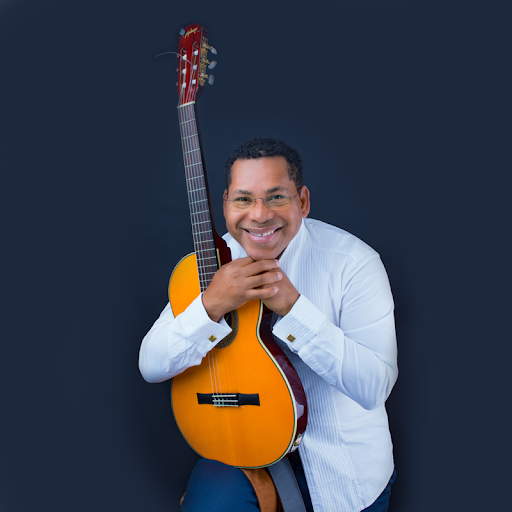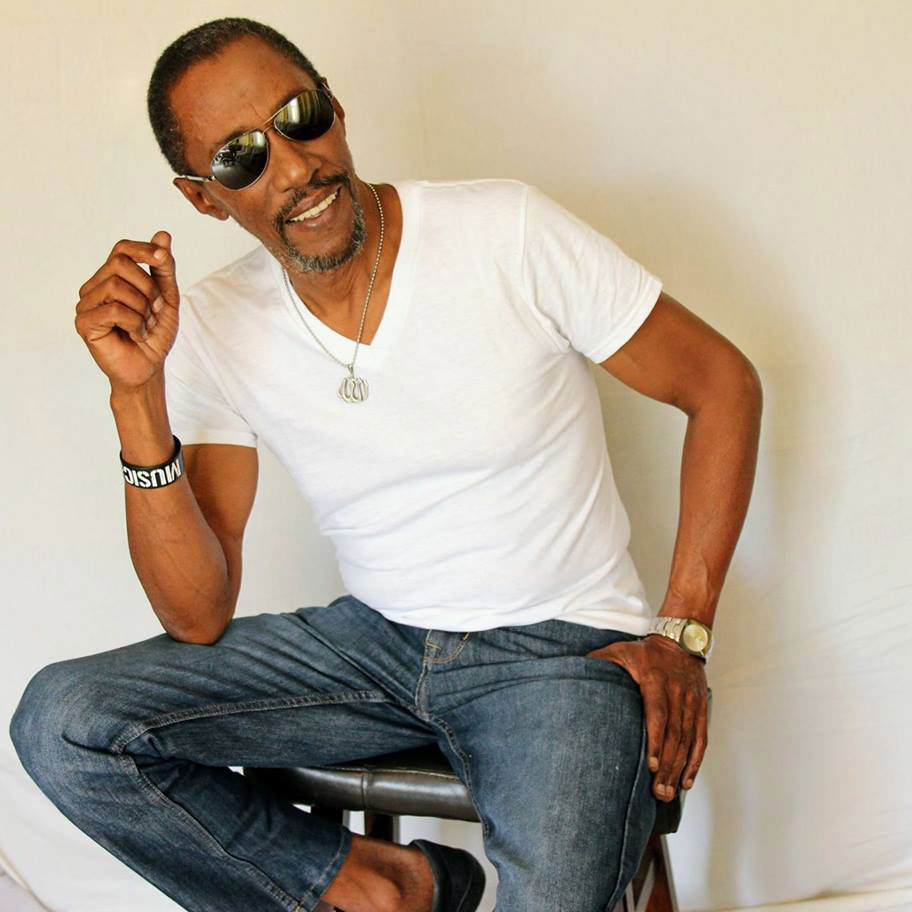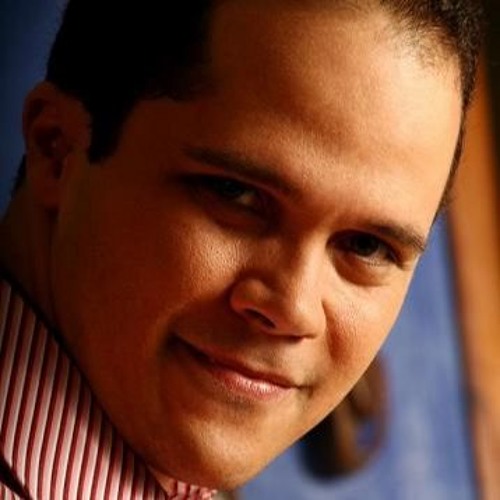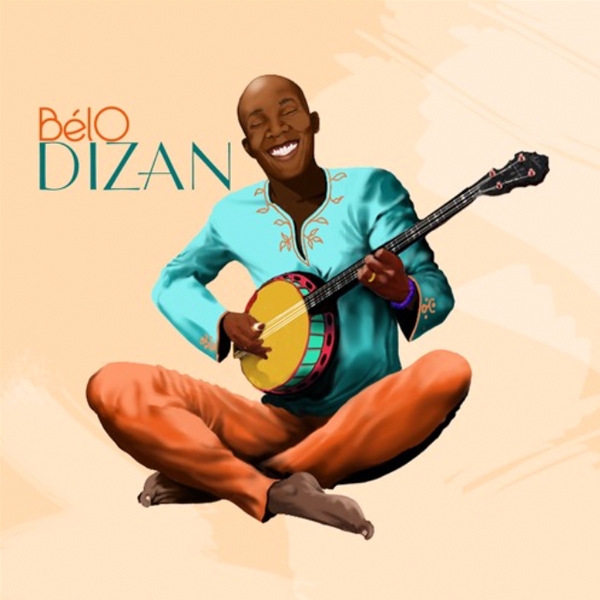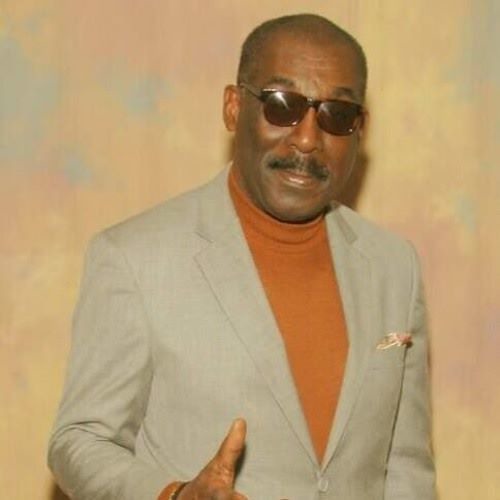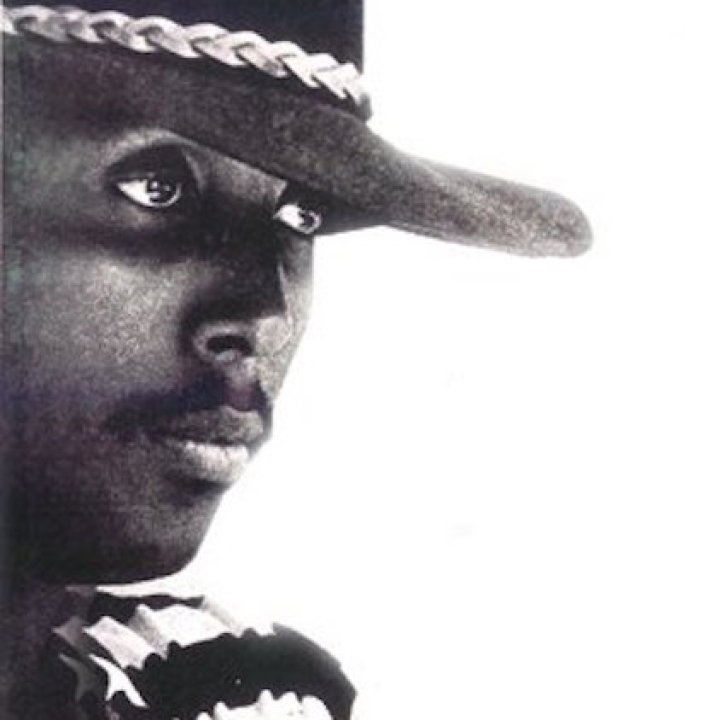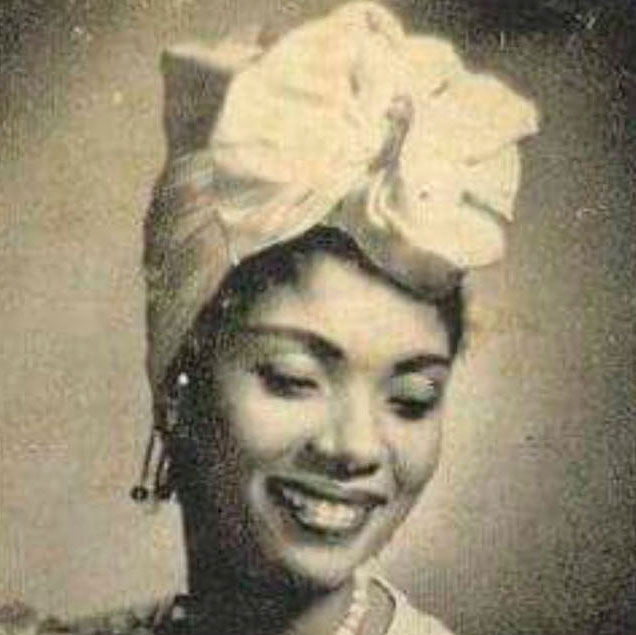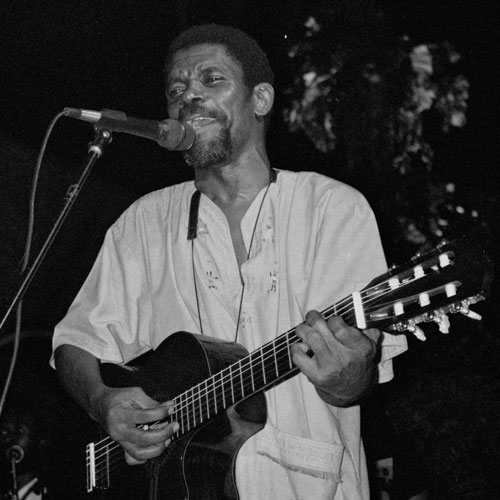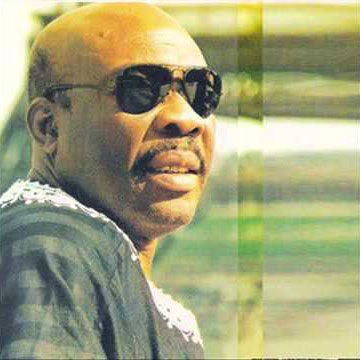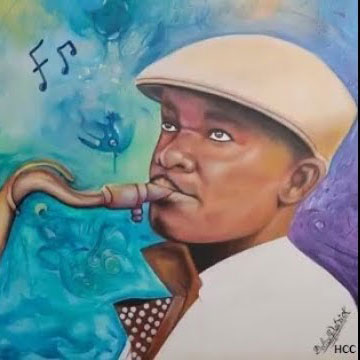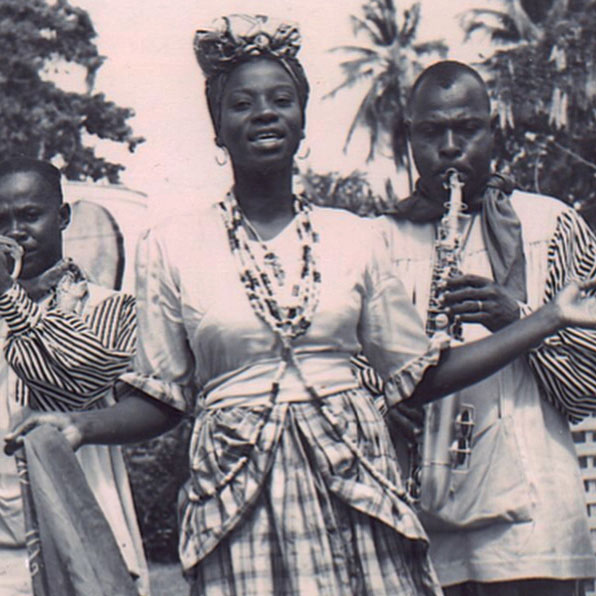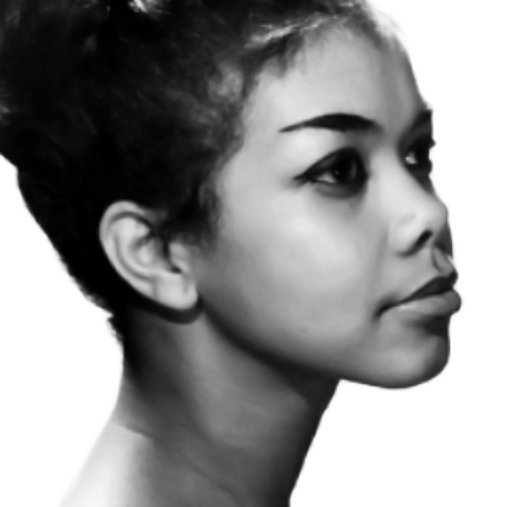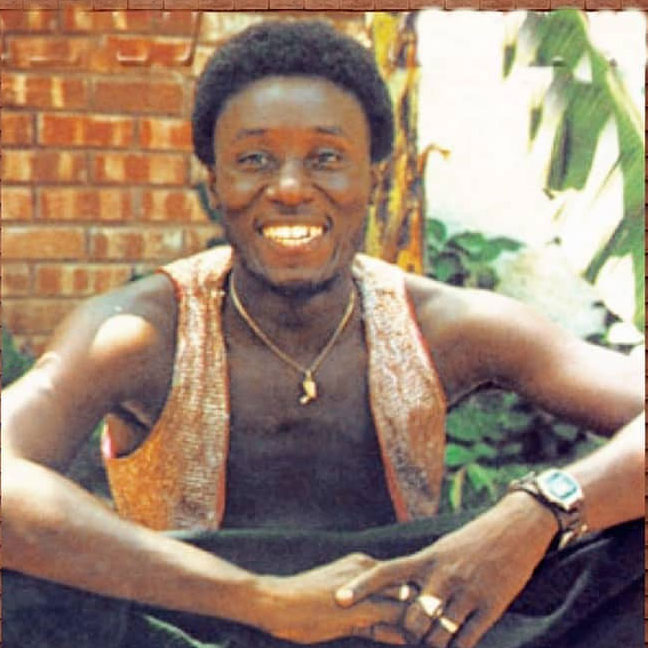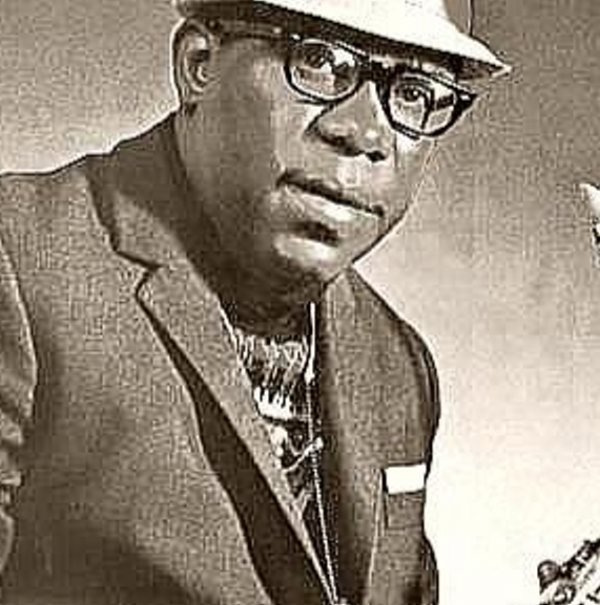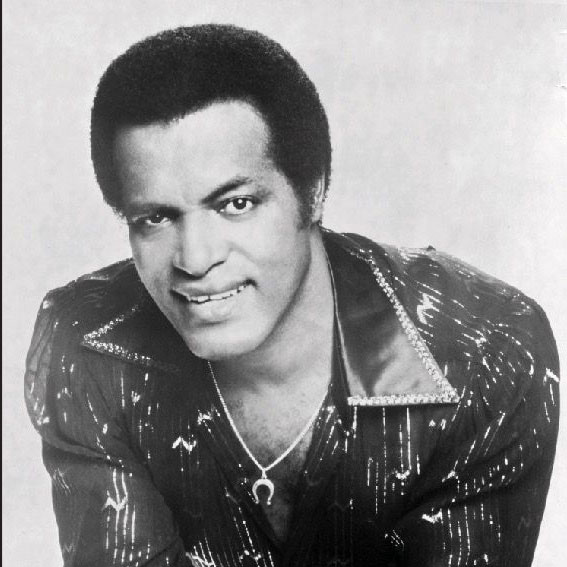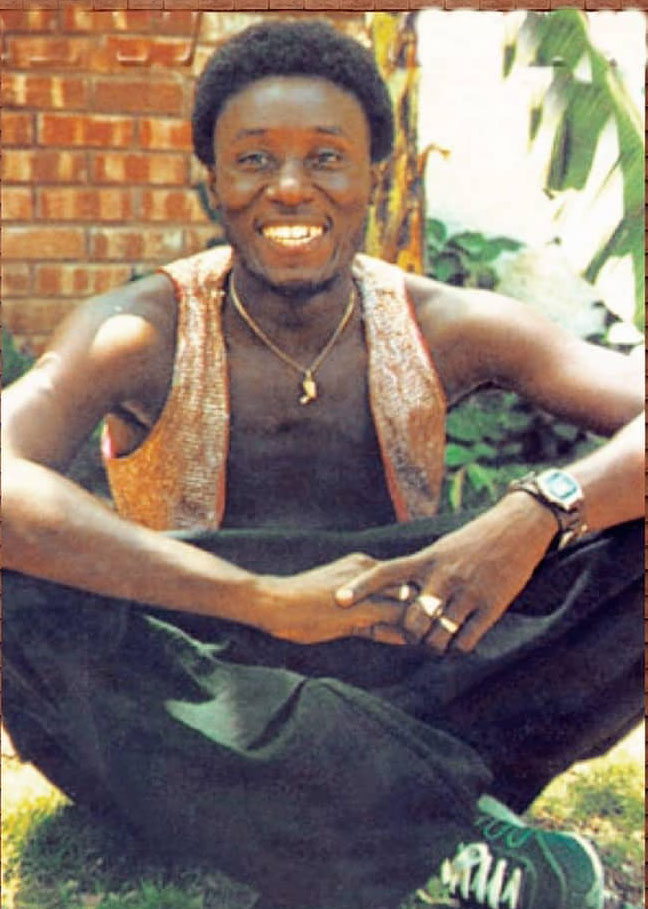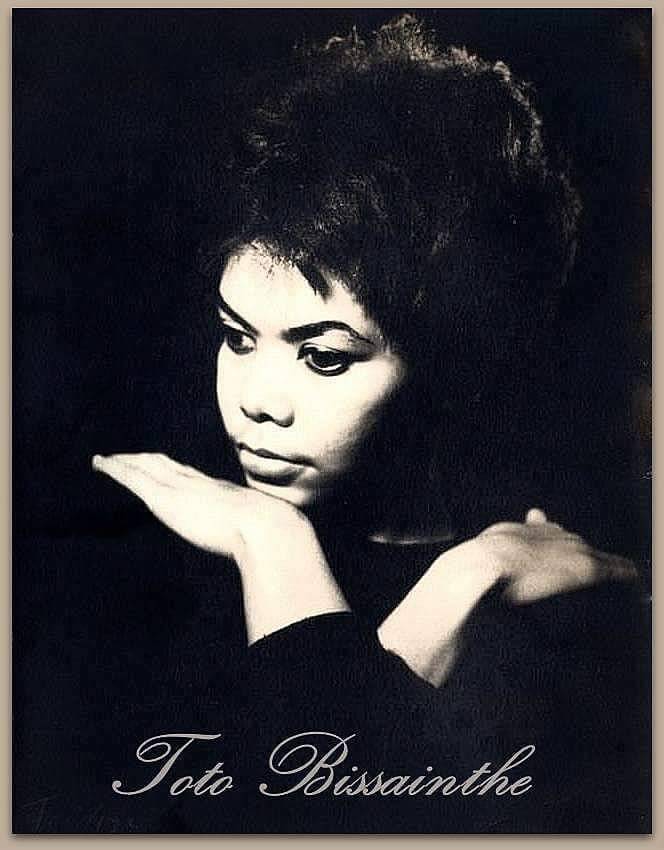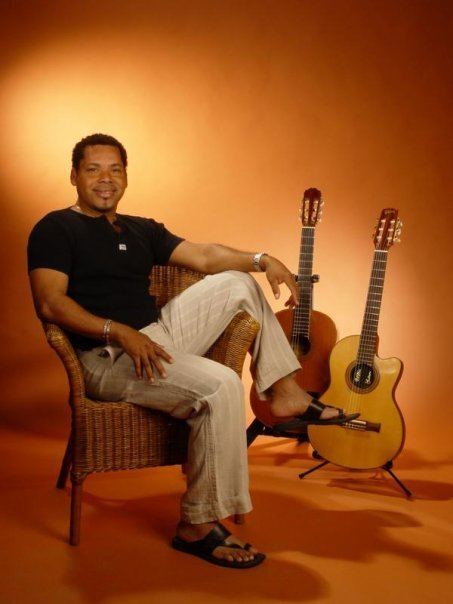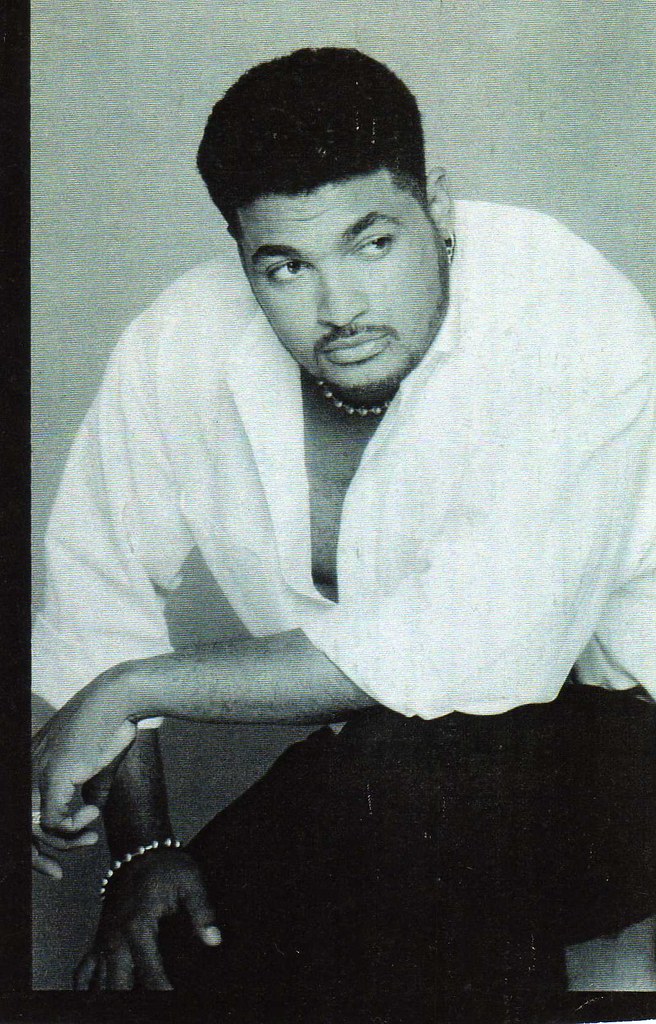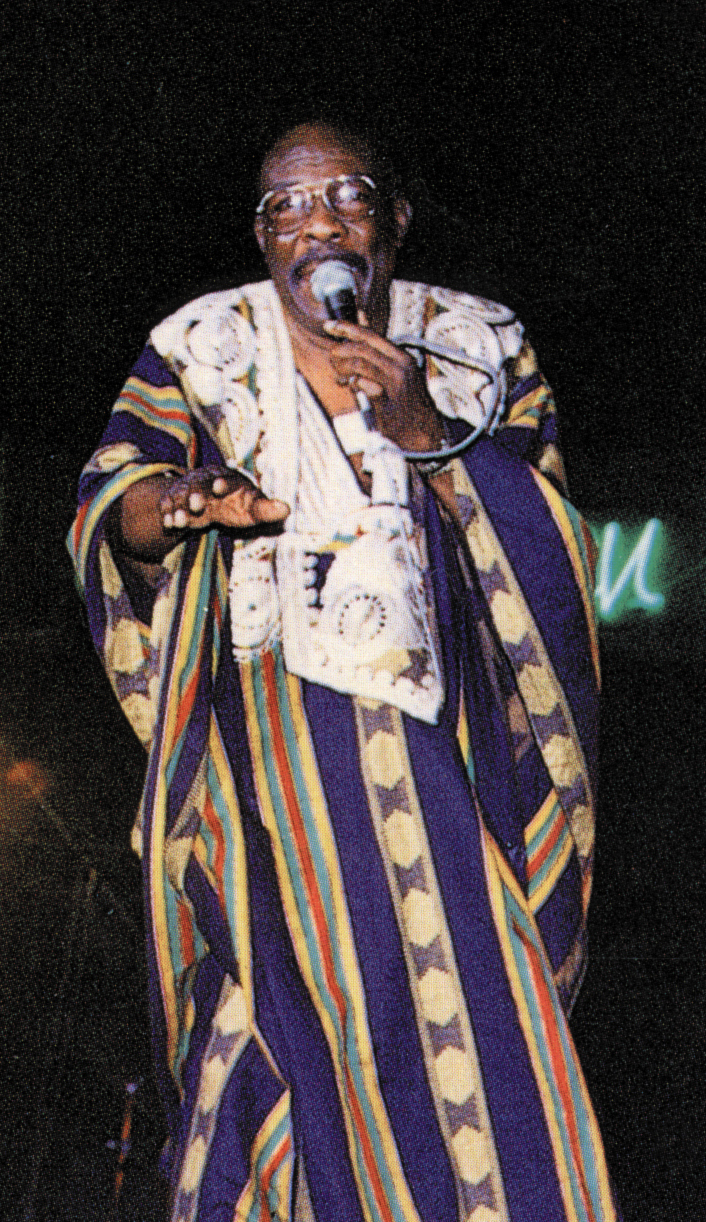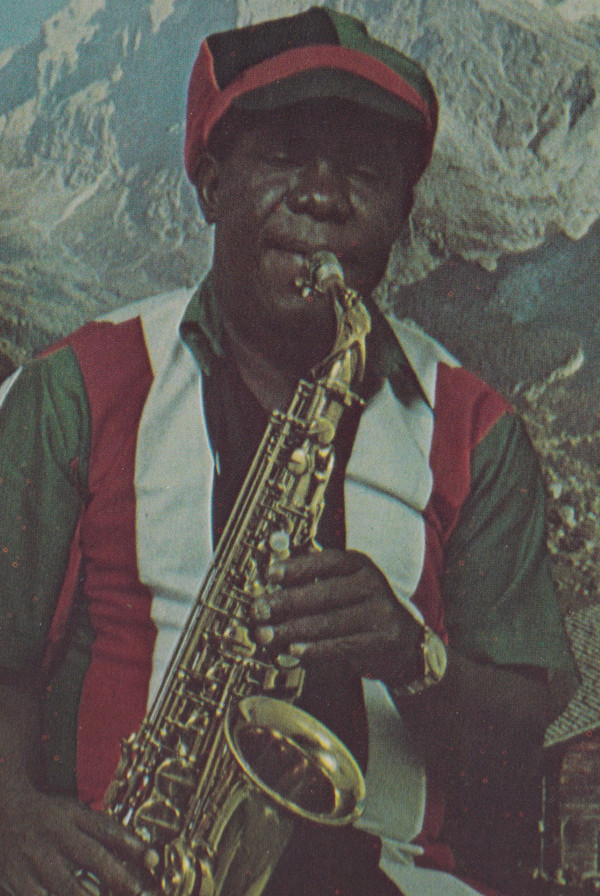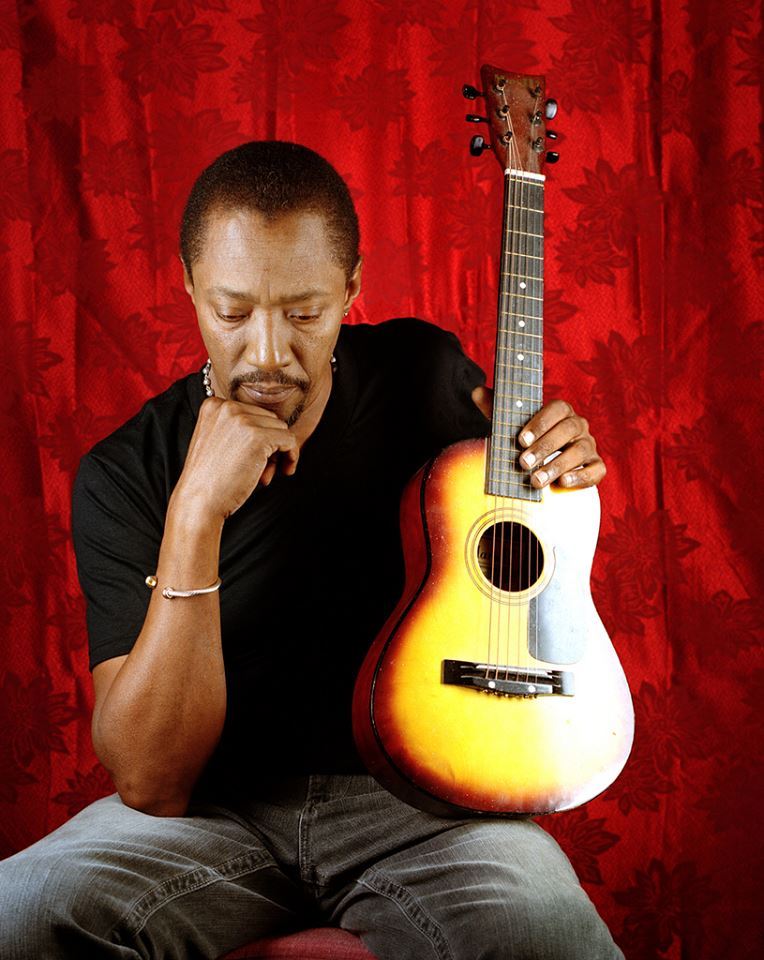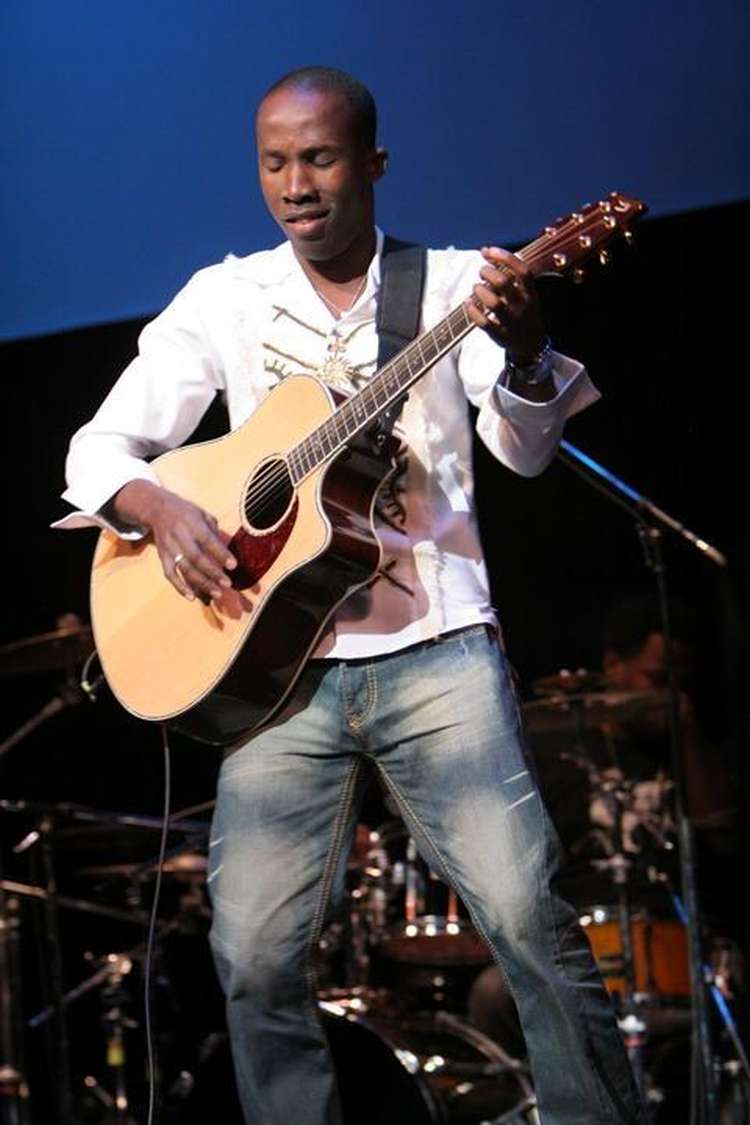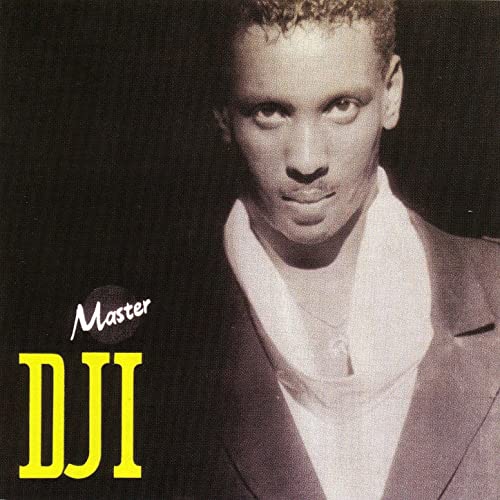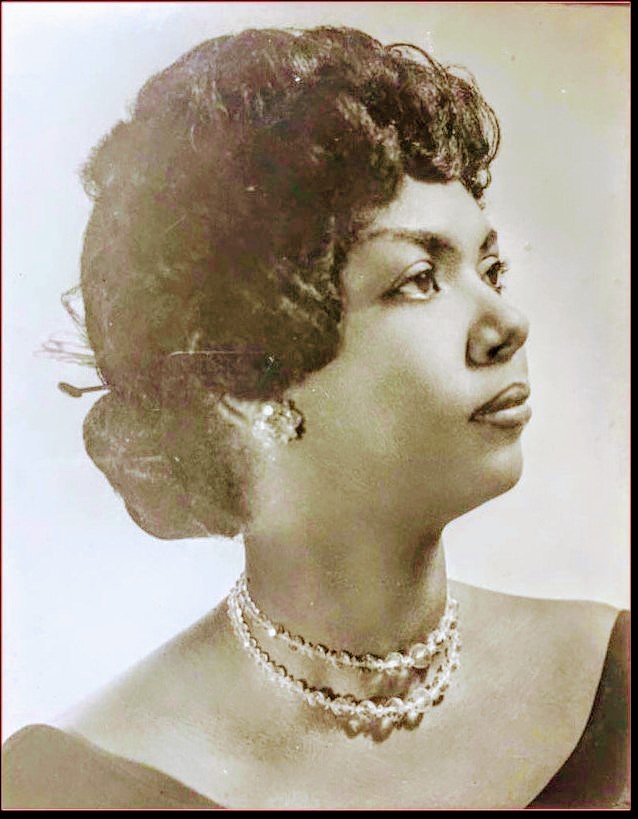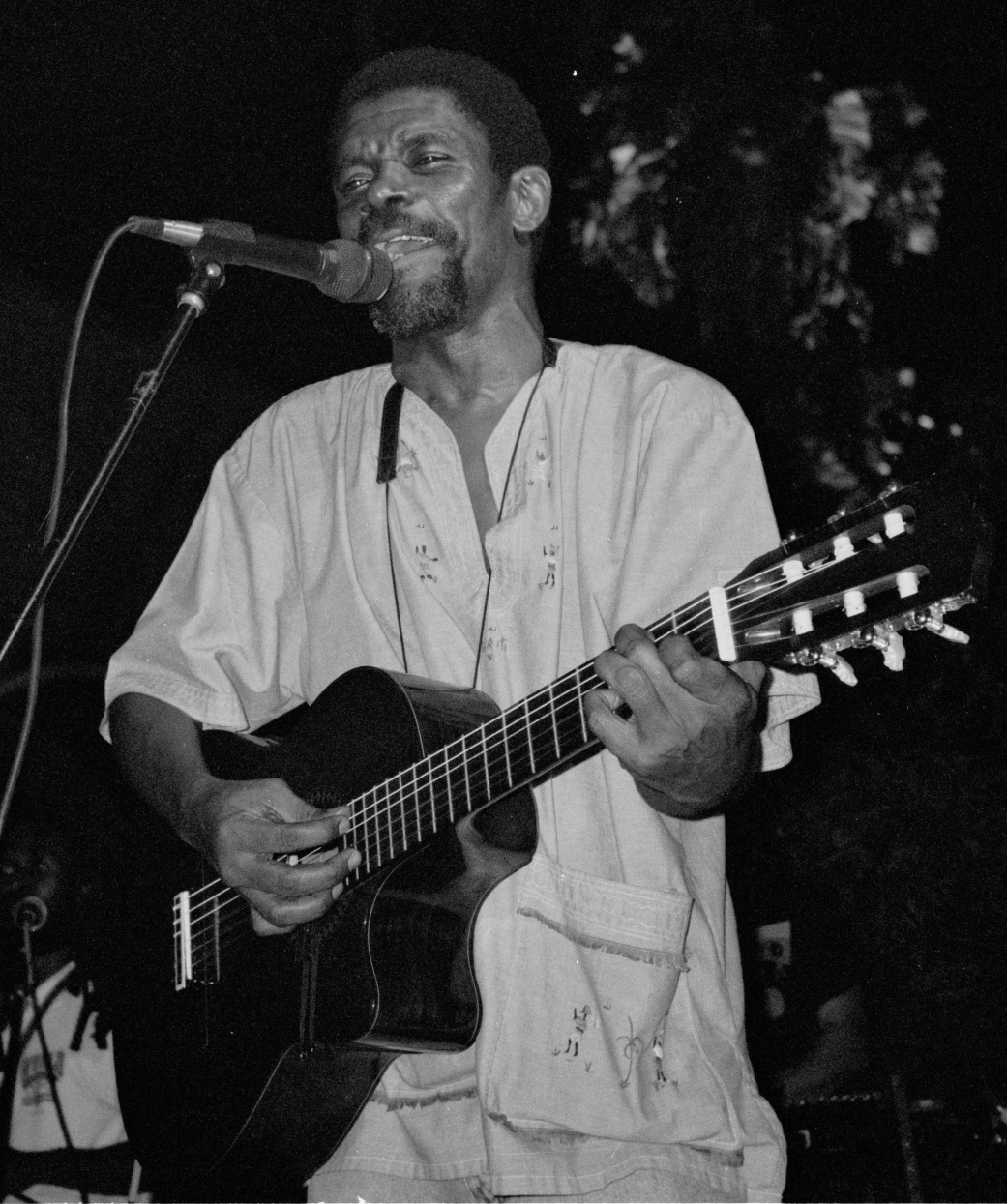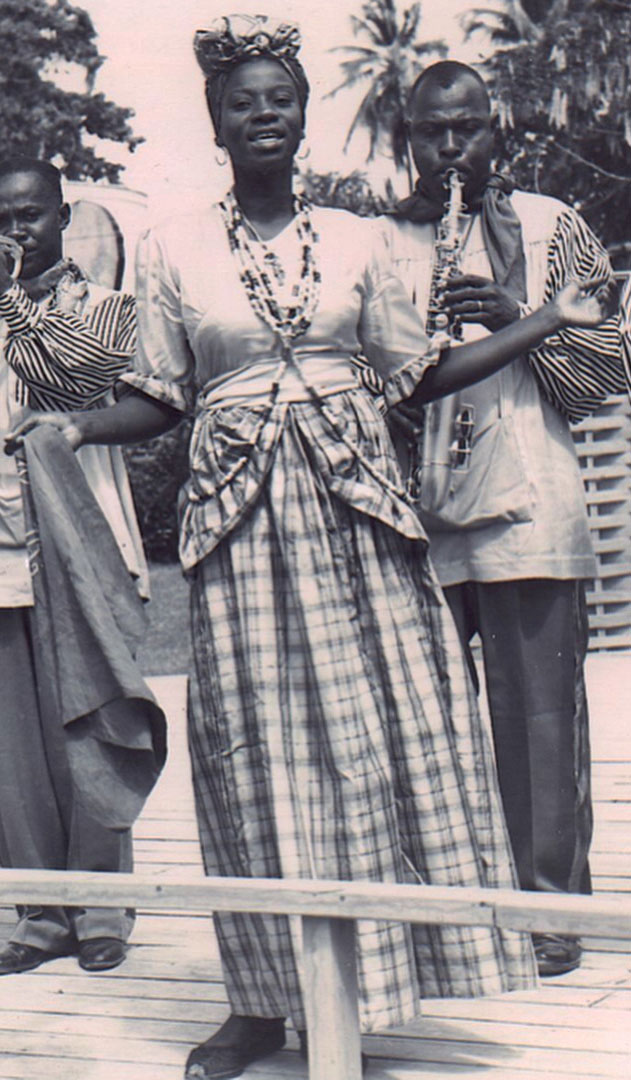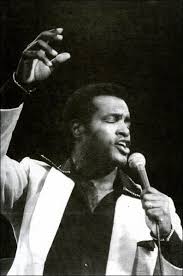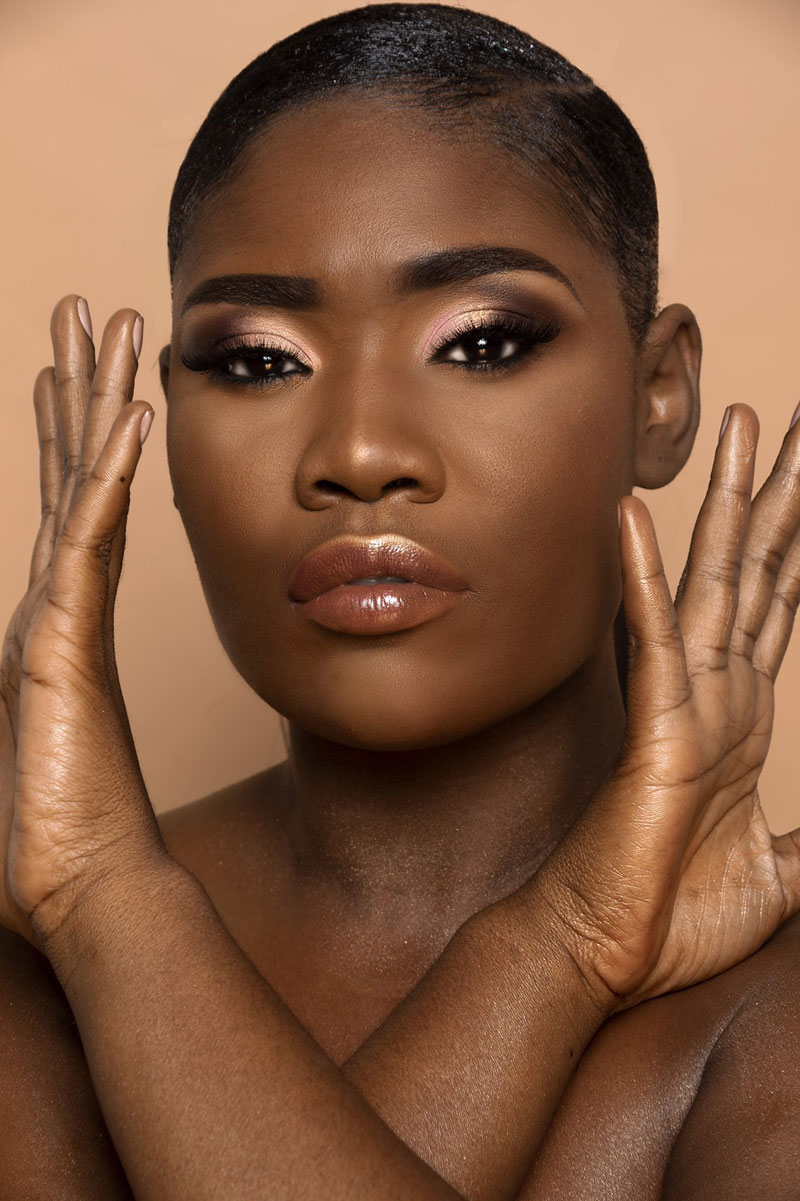Our Music Our Heritage
Dance to the beat of Haiti
Past and Present Haitian Artists
Alan Cave
Haitian Artist
Emeline Michel
Haitian Singer
Riva Nyri Précil
haitian Singer
Misty Jean
Singer
Rutshelle Guillaume
Haitian singer
Beethova Obas
Haitian musician
Wyclef Jean
Haitian / American Artist
Dadou Pasquet
Musical artist
Fabrice Rouzier
haitian musicians
BélO
Haitian composer
Jean Elie Telfort
Haitian singer
Master Dji
1961 – 1994
Emerante Morse
1918 – 2018
Manno Charlemagne
1948 – 2017
Coupé Cloué
1925 – 1998
Nemours Jean-Baptiste
1918 -1985
lumane casimir
1920 – 1955
Telfort, Jean Elie
a.k.a. Cubano is considered by many as the Godfather of konpa. Cubano was born in Port-De-Paix, Haiti on October 20.1950. He started singing and playing the Bass Guitar in the catholic choir of “Les Freres De L’lntruction Chrdtienne” in his home town. Jean Elie Telfort, a gifted vocalist, was one of the forces behind Skah Shah’s success in the 70’s, 80’s, and 90’s, which was then the flourishing peak of konpa music in Haiti. His mother thought him traditional and old time Haitian songs. His father, a skilled tailor, taught him discipline and the virtue of hard work. Jean Elie Telfort, the eldest of three children, grew up as an outstanding young man and served as a role model for his brother Georges, a mathematician, and his sister Camille, a nurse.
CUBANO’S BIG BREAK
Cubano was a teenager in the summer of 1964 when Gerald Dupcrvil, one of the biggest Haitian stars in the 60’s and 70’s, and his band “Riverside Band” came to Port-De-Paix to perform for “Fete Patronalc”, the town’s annual party. To everyone’s surprise. Riverside band’s bass player was unable to make the trip. So, Cubano’s music instructor urged him to approach Gerard Dupervil to fill the void. After several hours of rehearsals, Cubano managed to play the bass flawlessly and efficiently for the band. This experience would become perhaps the most important influential moment of Cubano’s musical career. After finishing school in “Notre Dame De Lourdes” of Port-de-Paix, Cubano moved to Port-Au-Princc in 1967 to complete his studies at “Lycee Petion”. In 1969, he earned a degree in accounting.
While in Port-au-prince, Cubano kept going back and forth to his hometown of Port-De-Paix. He loved playing soccer in the summer and he was still the lead singer in his church choir. Soon Cubano formed a small band called “Perle Des Antilles” which featured his schoolmates and childhood friends Roger M. Eugene a.k.a. Shoubou, Jean Alcindor, Max Maurin, and Michel Jadottc.
CUBANO’S SECOND BIG BREAK
In 1967, Cubano received a letter from his friend Roger M. Eugene a.k.a Shoubou informing him that Shleu-Shleu was looking for a lead singer. The next day Cubano boarded a bus to Port-au-Prince just to take part of the auditioning process that was being held by the group. Within a few months Cubano established himself as monarch in Haitian music, his voice can be heard at the pinnacle of La Citadelle (Haiti greatest monument). Cubano sang “toup pou yo” the anthem of the Haitian National Soccer team with the legendary players like Emmanuel “manno” Sanon, Tom Pouce, Philippe Vorbe, that made to the World Cup to Munich Germany 1970. In 1973, Cubano, the godfather of compas, left Haiti to begin a new journey in New York.
THE BIRTH OF SKAH-SHAH
While studying Computer science at Queens College, Cubano teamed up with Arsene Appolon, Loubert Chancy, Johnny Frantz Toussaint. Mario Mayala and Georges Francis to launch one of the most successful compas band in that era, Skah-Shah. Skah-Shah performed for the first time in July 29,1974 at Malibu night Club, New York. Michel St Victor aJc.a. Zouzoulc and the other members joined the band later. As one of the founders of Shak Shah. Cubano has been responsible for numerous multi-chart-topping songs and albums. With the release of Skah Shah’s first album, which featured one of kompa’s most memorable songs” Haiti”. The group played numerous showcases around New York City’s Metropolitan area. Europe. Haiti and the French Caribbean.
Instantaneously, Cubano became the idol of Konpa music around the world. With his majestic voice and charismatic style he helped to earn the title as the number one band in Compas – hence “Skah-Shah #1”. Since the pre-dawn era of Compas history, “Skah- Shah #1” was the first Haitian band to perform 6 days a week. As the group’s appeal broadened in the 70’s, Arsene Appollon left in 1976 to form Skah-Shah D’Haiti. Cubano became more of a leader for the group, he helped steer Skah-shah #1 in the right the direction. The group recorded several hit albums from 1973 until the original group dissolution in 1992.
Many people thought that was the end of Skah-Shah # 1 and Cubano but Jean Elie Telfort was determined not to watch his dream fade away. By the 1990’s “Nouvel Generation konpa,” a popular new trend in Haitian music was in full swing and Compas Direct which was Shah Shah’s style was not very appealing to a new generation of Haitians. Cubano was not discouraged by the lack of interest in konpa. He re-introduced Shah Shah to the general public in 1993 by bringing younger and more talented musicians. These musicians were Makarios Cesaire (one of the best Haitian guitar players), Yves Abel. Welmir Jean Pierre, and veteran musician Richard Duroscau (a sharp and fierce pianist and accordionist who played with Nemours Jean Baptiste). Camille Armand (1974), Claude Degrottes, Claudy Aladin, Romanc Doval, Paul Lamarre, Jean Charles Marc. Pierre Lcrebours, and Thomas Boyer from Berkeley University. Completely in charge and growing in confidence. Cubano has demonstrated the diversity and seriousness of his music by recording four compact discs. With this group of musicians, he has recorded numerous memorable songs, Juliana. Hommage A Nemours, Gina, Fanatik, Knockout. Bel-ange, Plezi Compas. and Amour D’enfancc etc. It should also be noted that Loubert Chancy, Zouzoul, later Richard Durosseau and other original members of Skah Shah #1 reunited to form Bazouka Skah-Shah in the mid 1990’s. After more than 30 years experience in the HMI(Haitian music industry) industry. Cubano remains indefatigable. Skah Shah no longer plays every weekend. He now performs occasionally in New York, Paris, Haiti, and other French Antilles.Skah Shah’s reign is still striving with particular audiences and fans.
According to Mario de Volcy, a famous Haitian drummer from another glorious Haitian band Bossa Combo and music historian, Cubano is one of the finest Haitian musicians that ever lived. As a human being. Cubano makes you feel comfortable socializing with you. He is very humble and respectful of others. Cubano never speaks about his accomplishments and his talents. He accepts people for who they are. Cubano has a God given talent to make harmonious music, he also dances very well. Harry Pierre, a long time Skah Shah fan refers to Cubano as being the disciple of Nemours Jean Baptiste, someone who seeks to preserve the legacy of pure kompa musicJn person, Jean Elie Telfort is a shy individual with private warmth. He leads a quiet life when he is not playing music. Cubano is a devoted husband, and a father of two lovely girls, Kizzy and Patricia. He is a big sports fan, particularly international soccer.He also plays tennis everyday to keep in shape.
Jean Elie Telfort, “the Godfather of Konpa”, is a true Haitian legend.
His passion, devotion, and commitment for Haitian music has brought joy to nearly three Haitian generations. There’s not enough room on this page to pay tribute to Jean Elie Telfort and Skah Shah and to talk about the impact they have had on Haitian culture and music, Haitian roots, which arc often forgotten by a newer generation, should be always remembered because of the history and rich culture of our small nation. Whether it’s konpa, compas, Djazz creole, troubadour, folklore, ibo, and voodoo music, we should never take for granted the uniqueness of the Haitian cultural experience.
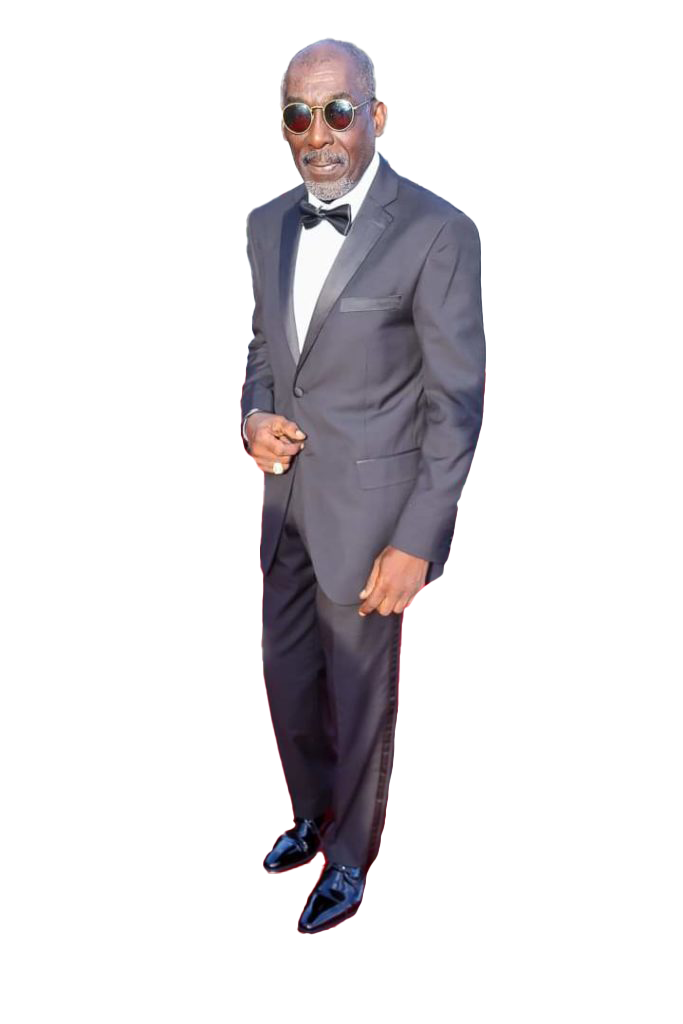
Nemours Jean-Baptiste
(February 2, 1918 – May 18, 1985) was a Haitian saxophonist, writer, and band leader. He is credited with being the inventor of compas, also known as compas direct, a style of Haitian music.
Nemours nicknamed “maestro” married Marie-Félicité Olivier with whom he had two daughters, Yvrose, Marie-Denise and a son, Yves-Nemours. Nemours dedicated many songs to his friends and fans. The 1967 composition “Ti Carole”, dedicated to his fan Kouri, became famous and is still a favorite.
In the early sixties, many of the Group Compas Direct’s compositions were in praise of women and healthy relationships “Ti Carole” was one of the famous hit that remains amongst the Top ten list for over a year. Nemours and the Group performed at several New York night club in the early seventies.
Rivalry with Webert Sicot
During Jean-Baptiste’s early career, he played in a band with fellow Haitian artist Webert Sicot called Conjunto Internacional. Years after the band dissolved, Webert Sicot introduced a new dance rhythm that bore many similarities to Jean-Baptiste’s compas. During the period of argument and controversy that followed, the two took lyrical jabs at each other in their songs. The competition between the two culminated in a soccer match between the two artists and their respective bands, which ended in a 1-1 tie.
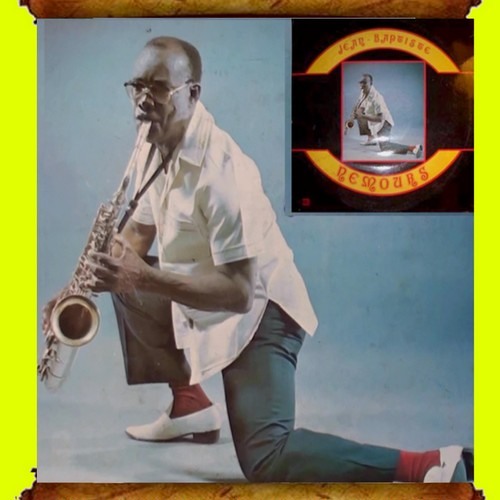
An Haitian Treasure
Emeline Michel
Haitian songstress and Red Cross Ambassador Emeline Michel is internationally acclaimed for fusing pop, jazz, blues, and traditional Haitian rhythms into deeply moving, joyful music delivered with a charismatic live show.
A master entertainer, Michel has shared her message with audiences for more than 20 years, including appearances at Carnegie Hall, The United Nations, Milan’s Teatro Manzoni, Florida’s Kravis Center, Festival International de Jazz (Haiti), Ontario’s Luminato Festival, Montreal International Jazz Festival, New Orleans Jazz Fest, Tasmania’s Ten Days On The Island, Zimbabwe’s Harare International Arts Festival, and MTV’s Hope for Haiti Now: A Global Benefit for Earthquake Relief.
Hailed by the New York Times as a “diplomat of music” and “the dancing ambassador with a voice serene and warm like the breeze,” Michel began singing with the gospel choir in the church of Gonaïves, Haiti. After studying at the Detroit Jazz Center she returned to Haiti, where her career blossomed. Now based in New York City, she runs her own production company, Production Cheval de Feu, and is a cherished voice for social issues surrounding women and children worldwide. Her most recent album Quintessence captures the reverence and gratitude for the present moment, showcasing Michel’s virtuoso vocal, singing in Creole, French and English, with finger-picked guitars, soulful backing vocals, a children’s choir, Haitian percussion, lush strings, playful trumpet and accordion lines.
An Haitian Queen
Ti Manno
Antoine Rossini Jean-Baptiste, born Emmanuel Jean-Baptiste, and better known as Ti Manno, was one of, if not the most, beloved and well known Haitian singer. His lyrics were avant-garde, he sang about the condition of the Haitian people, sexism, sexual harassment, power harassment, discrimination.
Ti Manno started playing music with small bands before joining the group “Les Diables du rythme de Saint-Marc”. In the 1970s he migrated to Boston and began playing with Ricot Mazarin for a band called Volo Volo de Boston, he left that band and later convinced by Arsene Appolon joined “Les Astros de New York”.
In 1978 he was the lead singer for DP Express one of the biggest and most popular Haitian bands at the time. Ti Manno left DP Express in 1981 and formed his own group “Gemini All Stars” and this group released five albums altogether.
Sadly in late 1983 he became very sick in New York with an untreatable illness. The Haitian community and music producers gathered together to raise money to try and save the superstar. “Operasyon men Kontre” set off and raised well over $15,000 toward Ti Manno’s hospital care. On May 13, 1985 the legendary Antoine Rossini Jean Baptiste aka Ti Manno died in Mount Sinai Morningside(then St. Luke’s-Roosevelt Hospital Center) .
On May 18, 1985, right after the death of Ti Manno, thousands of fans flooded the Eastern Parkway funeral hall in New York City where his viewing was held. Many artists, family members, media personalities and fans attended his viewing and funeral at St. Matthew’s church Eastern Parkway, which was conducted by his brother who was a priest, to pay their respects. He is buried at Calvary Cemetery.
A true Superstar
Toto Bissainthe
(1934– 4, June 1994) was a Haitian actor and singer known for her innovative blend of traditional Vodouand rural themes and music with contemporary lyricism and arrangements. Born in Cap-Haïtien in 1934, she left Haiti at an early age to pursue her acting studies abroad. Her career started in theatre with the company Les Griots, of which she was a founding member in 1956. Griots was at the vanguard of négritude-inspired cultural institutions in France, and was the first African theatre company in Paris.
The Griots was the troupe that gave the first performance of Jean Genet’s play “The Blacks.” She also worked with the playwright Samuel Beckett and the director Roger Blin and acted in several films.
With a groundbreaking performance in 1973 at La vieille grille in Paris, Toto Bissainthe established herself as singer-songwriter-composer, stunning the audience with her soul-stirring renditions of original compositions that paid homage to the lives, struggles, miseries and spirituality of working class and rural Haitians.
The singer and actress Toto Bissainthe was recognized by many as a champion of Haitian music abroad.
An artist in exile, Toto Bissainthe will be unable to return to the Haiti that so inspired her until the departure of Jean-Claude Duvalier in 1986. However, the multiple disappointments of the unending democratic transition and political infighting would forever embitter the outspoken artist, who had long dreamed of a return to help rebuild her motherland. Saddened by Haiti’s social and political degradation, Toto Bissainthe’s health would enter a downward spiral ending with her death from liver damage on June 4, 1994. The cause was cirrhosis, her family said.
Haiti Chante
Beethova Obas
Beethova’s father, Charles Obas, was a painter. A music lover, he named Beethova after Beethoven. Beethova was only 4 years old when Charles Obas disappeared after participating in a protest against murders committed by François Duvalier’s dictatorial regime. Charles Obas was never seen again, leaving the family in financial trouble, while also having a social and emotional impact.
Beethova became a self-taught musician, learning the guitar and accordion. His first musical release was a song composed with Manno Charlemagne, “Nwel Anme” (Bitter Christmas). In 1988, he won a Découverte RFI award for the Best Young Singer, when Manu Dibango, President of the Jury noted his voice and talent.
In 1991, Martiniquan pianist Paulo Rosine invited Obas to sing on Malavoi’s album Matébis after discovering his voice during a tour of the band in Haiti. Beethova then toured the Caribbean and France, gaining wider exposure and recognition.
Obas’ favorite artists to work with have been Jocelyne Béroard, Ralph Thamar and Manno Charlemagne all of whom he credits for helping him develop his craft.
Wyclef Jean
was born October 17, 1969) is a Haitian rapper, musician and actor. At the age of nine, Jean immigrated to the United States with his family. He first achieved fame as a member of the New Jersey hip hop group the Fugees. Jean has won three Grammy Awards for his musical work.
Jean’s highly publicized efforts to raise relief funds after the 2010 Haitian earthquake were channeled through his charitable organization, Yéle Haiti. The charity, which conducted education and welfare activities in Haiti between 2005 and 2010, effectively closed in 2012. Yéle was investigated for failure to file tax returns and mismanagement of funds; a high proportion of its money went to travel and administrative expense. The New York Times reported that much of the money raised by the organization in the Hope for Haiti Now telethon was retained by Jean for his own benefit.
On August 5, 2010, Jean filed for candidacy in the 2010 Haitian presidential election. However, Haiti’s Provisional Electoral Council ruled him ineligible to stand for office, as he had not met the constitutional requirement to have been a resident in Haiti for five years prior to the election.
In 2012, Jean published his memoir Purpose: An Immigrant’s Story. Along with Carlos Santana, Avicii and Alexandre Pires, he was chosen to perform the closing ceremony at the 2014 FIFA World Cup in Brazil. Their single, “Dar um Jeito (We Will Find a Way)”, the official World Cup anthem, was released on April 29, 2014.
Haitian pride
Alan Cave
Cavé’s was born to Haitian parents, and spent most of his adolescent years in Haiti. His mother Yanick Jean was a writer, and his father was a poet, writer, and art director named Syto Cavé. Cavé often accompanied his famous father on his tours of the Caribbean (Martinique, Guadeloupe, Saint Lucia), France, the United States and Canada.
Surrounded by people who loved the arts, and born to writers, it was natural for Cavé to follow in their footsteps. During his adolescence, Alan frequently played guitar, belting out soulful and heartfelt words and melodies that, to many audiences, seemed beyond his age. Cavé’s performance debut happened when an actor in a play fell ill and he was asked to sing the song “La Personne”. The enthusiastic audience reception crystallized for Cavé the desire to have a musical career, and Alan Cavé became a household name in Haiti.
In 1987, he met with Alex Abellard and Eddy Saint-Vil to audition, and Cavé was quickly signed for the group Zin. The group released their first album, “O Pa”, in 1989. More than two decades later, Zin’s guitarist-songwriter Eddy St. Vil, keyboardist and leader Alex Abellard, and its 11 band members remain popular, with sweet ballads and traditional Haitian kompa grooves. Cavé’s voice, sometimes characterized as “seductive,” considerably aided the success of the band.
Cavé’s was born to Haitian parents, and spent most of his adolescent years in Haiti. His mother Yanick Jean was a writer, and his father was a poet, writer, and art director named Syto Cavé. Cavé often accompanied his famous father on his tours of the Caribbean (Martinique, Guadeloupe, Saint Lucia), France, the United States and Canada.
Surrounded by people who loved the arts, and born to writers, it was natural for Cavé to follow in their footsteps. During his adolescence, Alan frequently played guitar, belting out soulful and heartfelt words and melodies that, to many audiences, seemed beyond his age. Cavé’s performance debut happened when an actor in a play fell ill and he was asked to sing the song “La Personne”. The enthusiastic audience reception crystallized for Cavé the desire to have a musical career, and Alan Cavé became a household name in Haiti.
In 1987, he met with Alex Abellard and Eddy Saint-Vil to audition, and Cavé was quickly signed for the group Zin. The group released their first album, “O Pa”, in 1989. More than two decades later, Zin’s guitarist-songwriter Eddy St. Vil, keyboardist and leader Alex Abellard, and its 11 band members remain popular, with sweet ballads and traditional Haitian kompa grooves. Cavé’s voice, sometimes characterized as “seductive,” considerably aided the success of the band.
Jean Gesner Henry
As a young man, he received a classical music education and worked as a cabinetmaker before becoming a professional football player. It was from football, playing defense for the Port-au-Prince club Aigles Noirs, that he acquired his nickname, “Coupé Cloué” or “cut and nailed”.
He began performing on guitar in 1951, and in 1957 he formed the band Trio Crystal, which he later renamed Trio Select, along with another guitar player and a maraca player. Their first album, one of the dozens Henry released during his career, was released in the late 1960s. In the early 1970s the group expanded from its original three, and renamed itself Ensemble Select. That decade also saw an increase in his use of racy spoken preaching and storytelling in addition to singing during songs; this became one of his trademarks.
In 1978 Coupé Cloué toured extensively in Africa, greatly increasing his international prominence. His popularity in West Africa was especially boosted by similarities between the rhythms and sounds of Henry’s music an African soukousmusic. It was there that Henry earned the nickname, Roi Coupé (or “King Coupé”). During the 1980s and early 1990s, Henry continued to perform and record prolifically.
Henry died of diabetes in January 1998, having only retired from performing the previous month. He was mourned in Port-au-Prince by a day-long outdoor funeral celebration, attended by thousands of people, including the interim Minister of Culture.
Webert Sicot
Webert Sicot (1930 – February 1985) was a Haitian saxophone player, composer and band leader. He is recognized as one of the creators of compas also known as compas direct, a style of Haitian music born in the 1950s that he named cadence rampa after he left Nemours’ band to differentiate himself in 1962 in the spirit of competition.
Career
Sicot was born in Port-au-Prince, Haiti, in 1930. He took his first musical lessons from Augustin Bruno. He made his debut as professional with Claudin Toussaint’s Jazz Capois. He also worked with the groups Jazz des Jeunes and the Saieh Orchestra, in the second half or the 1950s.
He founded with Nemours Jean-Baptiste the Conjunto Internacional and took part in the Citadelle orchestra and Casino Internacional Band. With Jean-Baptiste, he created the compas direct, a variation of the Haitian méringue. In 1961 he commenced a solo career and became one of the pioneers of cadence rampa. He played several instruments as trumpet, bass, piano and drums. Because of his frequent Caribbean tours with his brother Raymond in the Caribbean, cadence became very popular in Dominica and the French Antilles of Guadeloupe and Martinique.
Sicot died in February 1985 and is considered as one of the most influentials band leaders in Haitian popular music.
Misty Jean
Misty Jean started performing at age of three with the dance institute of Lynn W. Rouzier. She started singing at the age of seven in amateur singing contests. Since then, her passion for music became an obsession. At the College of “Anglade” where she graduated, she was named soloist of the choir and became an instant neighborhood celebrity.
In 1998, she took part in La Soiree Magique De La Guitare with well-known pianist Raoul Denis Jr. and The Widmaier brothers. In 1999, she is chosen by Haitel the leading Haitian cellular phone company to be their spokesmodel in a major promotional campaign.
During the month of February 2001, she flew to the island of Saint Maarten where she represented Haiti among twenty two other countries for the title of Miss West Indies. On February 21, she won the contest for best talent and was crowned Miss West Indies.
On May 27, 2001, she sang at the Ritz Kinam in Pétion-Ville, Haiti, on the night entitled “Femme” of Yole Derose. She may also be found in Caribbean Escape of Raoul Denis Jr.
In February 2002, she was crowned Miss de la Francophonie in Port-au-Prince, Haiti.
Dadou Pasquet
Magnum Band is a kompa band formed on June 24, 1976 by André Pasquet (a.k.a. Dadou), former musician of the group Tabou Combo, and his brother Claude Pasquet (a.k.a. Tico) in Miami.
In the late 70s the group became known in various clubs of Queens and Brooklyn thanks to the substantial Haitian community there. In 1980 they made their first international tour. In 1996, they performed at the 1996 Summer Olympics opening ceremony in Atlanta. In 1997, the band represented Haiti in the first World Creole Music Festival in Dominica. Throughout their tours in Guadeloupe in 2003 in France, Canada and the United States, the Magnum Band participated in the promotion of Haitian compas, and strengthened its footprint. The group celebrated its thirtieth anniversary in June 2006. The Haitian compas style interpreted by Magnum Band can be categorised as “old school”.
In June 2014 the band received the Honneur et Merite price from the Radio Television Caraibe
Belo
Jean Bélony Murat (born 29 October 1979, Port-au-Prince, Haiti) known by his stage name BélO, who is a Haitiancomposer and guitarist. His first album Lakou trankil (Quiet Streets) is treasured by Haitians because the songs explain and reflect the problems the country faces. Bélo is popular in Europe and Africa where he won the Discovery RFI Prime in April 2006. This award had already helped other artists like Tiken Jah Fakoly and Rokia Traoré to reveal their talent in the music industry. Bélo’s musical approach is influenced by other Caribbean styles but mostly by reggae and jazz.
Early years
Jean Bélony Murat was born on October 29, 1979, at Croix-des-Bouquets in the north of Port-au-Prince, the capital of Haiti. He grew up at Pétion-Ville an area where music has an important role in the Haitian community. He started to sing at a very young age and at 11 years old interpreted Buju Banton, his idol. In 1994, he and his friend formed the Mega Boys which was not very successful. In 1997, he met Fabrice Rouzier and San, two artists who discovered his talent and encouraged him to play an instrument. At first, he chose the bass but changed later to the guitar. He knew that music could not be his only occupation if he was to please his supporters. He went to university in 2001 where he studied accounting for four years. Then he was ready to devote his life to music and released his first album in 2005.
Music
After Lakou trankil, the first album which had a lot of success locally and internationally, BélO released Reference. This is also close to reggae and has a touch of pop and jazz. He exposed the social problems of humankind, such as violence, AIDS and homeless children. In other words, BélO is an ambassador of the Haitian music; he shows love and affection for his homeland. In his songs he is making society aware of its problems and is proposing solutions.
Master Dji
George Lys Herard (May 30, 1961 – May 21, 1994), known by his stage name Master Dji, was a Haitian rapper, hip-hop artist, and DJ for the group Haiti Rap’ N Ragga, who was a prominent figure in the development of Creole hip-hop. He is best known for his debut album Master Dji, released in the late 1980s. Herard was also a radio host at Radio Métropole and Tropic FM.
Herard was a versatile rapper, able to perform in English, French and Creole. His track “Vakans” (1982) was one of the first rap songs in Creole. In the late 1980s he released his first album, Master Dji.
His second album, Politik Pam, was released in 1990 on Bwa Patat Records. His third album Match La Red, with his group Haiti Rap’ N Ragga, was released on Declic Communication in France. His fourth and final album, again with his group, was Maximum Respect, released on Cross Over Records in Florida. He died from AIDS on May 21st, 1994.
Herard’s track “Tann pou tann” won the first prize at the annual African Haitian Video Awards, held from April 27 to May 7, 1995, and organized by Disques Hibiscus and the music television channel MusiquePlus. The video was directed by Herard and Jean-Pierre Grasset.
From May 20 to May 22, 2005, Rapforum organized a summit named Master Dji in Herard’s honor, which was held at Place Jérémie.
Emerante Morse
Emerante’s mother, Amarante Jean Pierre, implored Our Lady of Mount Carmel, patroness of the Carmelite order, to give her a child, a baby girl, “promising that in return she would devote this child to the virgin saint.” Emerante was born when her mother was “on vacation at Rivière Froid“.
De Pradines went to Washington, D.C. in 1941 as a featured singer and dancer in a troupe led by Lina Mathon-Blanchet. After her return to Haiti, de Pradines performed in a regular concert series at the Rex Theater in Port-au-Prince. She often sang renditions of traditional vodou songs, “then a novelty in Haitian social life”.
De Pradines sang Vodou songs in Creole on the radio when it was dangerous to do so, and was the first Haitian singer to sign a recording contract with a record company. She married Richard M. Morse, a Latin-American scholar and writer from the United States who she met while studying in New York with Martha Graham. Her albums were released internationally, including by Smithsonian Folkways in the United States.
At a young age, de Pradines was a student of Martha Graham. Between 1978 and 1981 Emerante de Pradines Morse taught dance classes in the Athletic Department of Stanford University. There, her students learned modern Graham technique as well as Haitian dance. Affectionately known by her Stanford students as Emy Morse, she choreographed several dance productions such as “Carnival!” for which she designed the costumes. Emerante De Pradines Morse made the costumes herself with the assistance of one of her students, Harvetta Silvarya Strozier, whom she taught how to make her designs out of fabric, raffia, ribbon, and other materials – without using purchased patterns.
At Stanford University, Emy Morse was the epitome of beauty and physical fitness. In her late fifties and early sixties, she showed her students how to do all of her warm-up dance steps and stretches as well as every choreographed step and routine whether simple or complex. She stressed the importance of elegant movement and demonstrated in minute detail how such was to be done.
Whether conducting a dance class, choreographing an extracurricular dance production, or observed elsewhere around the campus of Stanford University, Emerante De Pradines Morse always carried and expressed herself with the utmost grace and elegance.
Manno Charlemagne
Joseph Emmanuel “Manno” Charlemagne (April 14, 1948 – December 10, 2017) was a Haitian political folk singer, songwriter and acoustic guitarist, political activist and politician. He recorded his political chansons in both French and in Creole. He lived abroad in exile twice, both during the 1980s and again during the years 1991–1994, when the country was ruled by a military junta led by Raoul Cédras.
Charlemagne grew up in Carrefour, to the south of the capital of Port-au-Prince, where he was influenced as much by the songs of the peasants who moved into the area in search of a livelihood, as by his Catholic school choir. Raised by his aunt, he did not know who his father was until he was 37 years old.
In 1986, after the fall of the Duvalier dictatorship, Charlemagne organized a youth group and choir in his old neighborhood, Carrefour. For a brief time following Jean-Bertrand Aristide’s landslide victory on 16 December 1990, Charlemagne found himself in the role of a government booster. He served as an unofficial minister in the Aristide cabinet, an assignment that ended abruptly nine months later, when a military junta overthrew Haiti’s first freely elected president.
On 11 October, a truckload of troops pulled up to his home, roughed him up in front of his family, and hauled him off to jail. His wife, Chantel, went into hiding with the couple’s baby son, Ti-Manno, and later fled to the island of Guadeloupe.
Charlemagne took up guitar and singing at the age of 16. By 1968, he had formed a band named Les Remarquables. He later started a twoubadou band named Les Trouvères with Marco Jeanty.
Riva Nyri Precil
Riva Nyri Précil was born in Brooklyn. Her mother, Michelle Karshan, is an American of Russian and Irish descent and produced and hosted the radio show “Sak Pase” (1991-1995) while her father, Privat Précil was a Haitian who worked in the US as a journalist and lawyer. Riva and her family moved to Haiti when she was five years old as her mother got a job in Haiti. Her mother worked for the Haitian government specifically on foreign press liaising, using her foreign heritage as an advantage to manage the foreign press who visited Haiti.
Singer
After Riva graduated Loyola University Riva came back to New York. In 2014, Riva realized the lack of Haitian Creole contents in the world and felt a “sense of duty to dedicate herself to keep the Haitian art alive and conserve it for her ancestors and for her country.” This led her to start working on her first album “Perle De Culture”. By meeting her present fiance in the end of 2013, Monvelyno Alexis, who also is a prominent musician, Riva worked with him to create an album independently.
The songs were mainly traditional Haitian music with a modern twist. The songs were newly arranged in a jazz style by her fiance, Alexis. Riva worked during the daytime and recorded songs at night at a studio in Brooklyn called “Kamoken Studio”. The studio was owned by Chico Boyer, who was a pioneer of Haitian roots music. He even personally participated in a few songs on the album as a bass player. In 2015, the album was completed and released through CD Baby which allowed Riva to officially launch herself and put her music out to the public.
Ever since her album was released, she is constantly gigging around the world to promote Haitian culture and its beauty. She has performed at the New Orleans Jazz & Heritage Festival —alongside Emeline Michel —Carifesta XII hosted in Haiti, the Haitian Flag Day Celebration at Brooklyn’s Borough Hall, and various other ceremonies. Recently, she has been working with a label, “Strictly Rhythm” to musically expand her horizon and work in different styles of music such as Afro House and dance music.
Fabrice Rouzier
Fabrice Rouzier was born in Hôpital du Canapé-Vert in Port-au-Prince. He has lived in Bois Moquette, where he has a recording studio. He currently resides in Pétion-Ville, where he has spent most of his life.
Fabrice Rouzier began playing piano with his aunt Marguerite Borno at the age of four. By 1984, he was playing and recording with musicians and producers including Hans Peters, Bobby Denis, and Patrick Dejean. He started his career in the early 80’s and in 1986, he joined, Keke Belizaire, Mano Obas, Choupite Jacquette and other musicians to launch the musical band, Mizik Mizik. The band has released the classic albums, “Blakawout”(Blackout) in 2001 and “Paradi nan Lanfè”(Paradise in Hell) in 2008. Rouzier is also the master producer of the “Haiti Troubadours” CD series.
Over the course of his career, Fabrice has recorded and collaborated on over 300 albums . He has greatly influenced the development of “Compas Nouvelle Generation” and helped launch the career of many well-known Haitian musicians, including Emeline Michel, Michel Martelly, Beethova Obas, Boukman Eksperyans, BélO, Tifane, Jude Jean, Jahnesta, and many others. Rouzier is greatly known as one of the ‘Twoubadou Movement’ leaders for revitalizing the genre, along with Keke Belizaire. As of 2005, he is one of the forces behind the young record label “Soleil Sound” that has recorded “Haiti Troubadours”, BélO, and Nickenson Prud’Homme’s upcoming album. He has also produced the first solo albums of crooner Jude Jean and of newcomer Tifane.
Lumane Casimir
Lumane Casimir was born in 1920, in a very small town in Gonaives. Not much is known about Lumane Casimir’s early age. Her known history began at the age of 13, when a pianist discovered her talents, and encouraged her to pursue music. At the age of only 14, Lumane left Gonaives, moved to Port-au-Prince with nothing but a guitar, questing her dreams. It was her first time ever in a new city. A new city where she had absolutely no friends nor family members. Port-au-Prince, the Capital of the Country with the highest annual tourist visits in the Caribbean, was full with opportunities. Haiti led the Caribbean Tourism at the time. 302.000 tourists from all over the world visited Haiti on the summer of 1970. ( 139.000 by air, 163.000 by sea) But It didn’t take Lumane too long to realize that life in Port-au-Prince, was not as easy for a teenager as she initially had thought it would. She began her singing career, in the streets of Port-au-Prince. Singing for money to survive.
Many, like the aforementioned pianist, immediately took notice of her incredible talent and her upsetting, yet charming voice. Lumane Casimir established herself as a true diva, representing very well the title “Emperatrice of Haitian Music” that will be conferred to her decades after her death, when she was chosen as the honorary singer to sing at the Country’s 145th years Independence Celebration, in 1949, in front of thousands of spectators from all over Haiti and the world. Many dignitaries of many different countries, and tourists from all over the world were at Champ-De-Mars enjoying the ambiance; the grandiosity of this celebration. Lumane Casimir charmed every one with her voice, her presence and with the elegance of the poetic and patriotic lyrics of her songs. Prominent magazines such as Newsweek, called her “The Queen of the Meringues” Meringue in general, not just Haitian Meringue. Before she knew it, she was singing with some of the most famous bands in neighborhoods around the capital and some well known national ones. Bands such as The Legba Choir, a folk group; The National Folkloric Troop, Le Jazz des Jeunes, one of the most famous band at the time, and so many more respected artists. A singer with a striking talent like Lumane Casimir never takes long to get noticed.
Ansy Derose
Né à Port-au-Prince le , Ansy Dérose commença très tôt sa carrière de chanteur sous la conduite de Mme Elisabeth Mahy, Professeur de technique vocale, de nationalité française. Pendant toute une décennie, il ne chanta que les mélodies de Frantz Schubert, de Schumann et de Beethoven. Il excella dans les airs de Lalo, de Jules Massenet et de Gabriel Fauré. Ayant obtenu une bourse qui lui permit de continuer ses études techniques en Allemagne (où il se rendit le ), il ne négligea pas pour autant son talent et son art. C’est pourquoi il s’inscrivit au « Musick Hoch Shule » où ses professeurs lui reconnurent un grand talent d’interprète. Par la suite, transféré à Sarrebruck, il participa à un concours d’amateurs programmé par la Radio télévision de cette ville, concours dont il sortit premier lauréat. C’est ainsi qu’il commença à faire connaître dans le pays de Goethe et Beethoven les chansons traditionnelles haïtiennes ainsi que celles, d’une facture remarquable, qu’il composait déjà lui-même. À son retour d’Allemagne en 1964, invité par des parents pour un séjour à Chicago, il y resta dix-huit mois et s’inscrivit au « American Conservatory of Chicago » sous la direction du Grand Maître G. Moore dont il gagna l’estime et l’admiration. Sa grande entrée sur la scène internationale fut au « Premier Festival mondial de la chanson » qui se tint à Mexico en , avec certains des plus grands noms de la musique européenne et sud-américaine, et des chefs d’orchestre et arrangeurs comme Paul Mauriat, Franck Pourcel, Pochio Perez.
En 1972, son premier disque Ansy, sa Musique et sa Poésie fit les délices des mélomanes. Son second album Quo Vadis Terra (1974) connut un succès inépuisable. Ses chansons, symboles d’espoir, d’amour et de fraternité, ont fait de lui le chanteur le plus adulé du pays.
Rutshelle Guillaume
Née à Port-au-Prince, le 28 juillet 1988, d’une famille de trois enfants, Rutshelle GUILLAUME est l’unique fille de son Père. Dès l’âge de 5 ans, elle commençait à chanter à l’église de Dieu de Boulard dirigé par le Pasteur Louis DESTINVAL. Sa passion pour la musique l’emmène à 19 ans, au sein du groupe “REL”, une formation musicale composée pour la plupart de jeunes musiciens de l’Ecole Nationale des Arts (ENARTS).
Lors d’une formation sur les techniques vocales organisée par James Germain, Emeline Michel et Stevenson Théodore à la Fokal, sa prestation sur scène lui permet de surprendre Yole Derose, en quête de jeunes talents féminins pour son projet “Haïti Cœur de Femmes”. Rutshelle intègre alors cette formation en Septembre 2011.
C’est en 2013 que sa carrière musicale prend son envol et qu’elle se fait connaître dans l’univers musical haïtien avec son opus vidéoclipé ‘’KITE M KRIYE”.
Avec 5 années d’expériences en tant que professionnelle de la musique, elle a deux albums à son compte « EMOTIONS sortie en 2014 et REBELLE en 2017 ». Beaucoup vous dirons que Rutshelle est une grande collaboratrice car au-delà de ces projets personnels, elle participe à la création d’œuvres d’autres artistes ou groupes musicaux tels que Veeby (Cameroun), J. Perry, James Germain, Doc Filah, BIC, Fantom, Barikad Crew, KAÏ, pour ne citer que ceux-là. (Haiti). Elle intègre le projet musical « Vwalye », soutenue par l’Union Européenne et qui a pour objectif de faire découvrir des talents haïtiens émergeants.
Rutshelle Guillaume est très présente sur la scène internationale avec des prestations en Afrique du Sud, le Congo, la Barbade, la France, les Etats-Unis, le Canada, les Bahamas, la République Dominicaine et bien sûr en Haïti avec notamment le Festival International de Jazz de Port-au-Prince.
Au-delà de la musique, Rutshelle est une Philosophe de formation, elle a obtenu une licence en philosophie à l’Ecole Normale Supérieure (ENS) de l’Université d’Etat d’Haïti (U.E.H).
Entre vie professionnelle, répétitions musicales, enregistrement d’album et concerts à travers le monde, Rutshelle figure de nos jours, parmi les voix féminines les plus écoutées et les plus charmantes sur les ondes. Elle continue de se créer une place dans l’univers musical haïtien avec comme perspective de faire découvrir la culture haïtienne sur le marché international.

